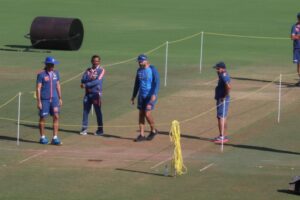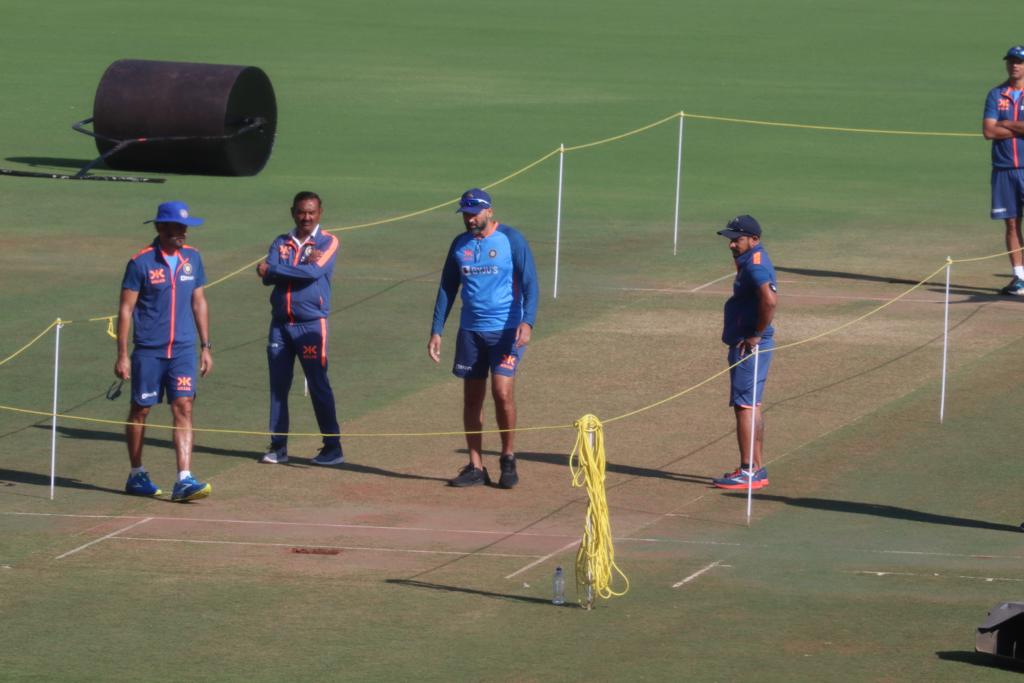
-Boria Majumdar
Pitches don’t win cricket matches. Quality cricket does. However, good or bad the wicket, you still need to play quality cricket to win the match. When India travelled down under in 2018 or 2020-21 not once did we hear Virat or Ravi Shastri complain about the wicket. Not once did Rohit or Ajinkya say the WACA wicket was not up to the mark. India played outstanding cricket and won. Most recently against South Africa the game at the Gabba ended in 2 days. Few blamed the pitch. Most said South Africa was poor. Yet when it comes to India, there is always talk about a poor pitch.
What defines a poor pitch? For some Australian experts and journalists a wicket which offers turn is a poor wicket. The underlying assumption is that a good wicket has to have turn and bounce. The question is who has helped set this benchmark? Why is it that a turner is a bad wicket and one with bounce good?
A senior journalist tweeted today saying this could well be Australia’s greatest series win if it comes on systematically doctored pitches? And you are like really? What does systematically doctored mean? If the hosts prepare a wicket which helps spin, it means they have systematically doctored the track? So if the WACA wicket has extra pace and bounce and if the curators retain it for a Test match against a sub-continental team, does it mean they have doctored the pitch?
The reason the contest is called ‘Test’ cricket and I emphasise on the word ‘Test’ is because it will test the players’ character. How good is someone in different conditions? Can he stand up to the different kinds of challenges that are thrown at him? To say wickets are doctored or wickets are bad just because they offer spin are like preparing excuses in case the result does not go your way.
In 2020 we celebrated Cheteshwar Pujara for his heroics in Australia. Each time the ball jumped up like a missile and hit him on the body, we shared his pain. And each time he took stance again, we heaved a sigh of relief. Pujara was being tested. His resolve questioned. His ability scrutinised. And he was the winner because he passed the Test. None of us questioned the wicket. No one said it was systematically doctored. It was the wicket that was offered and you had to embrace the challenge.
This is how Pujara’s had described the challenge when he returned home. ““It was tough but I knew I had a job at hand. My gameplan was simple. It’s okay to be hit for to stay on that pitch you needed to take those body blows. One particular end had variable bounce and the ball misbehaved if it hit the cracks. If I tried to get on top of the ball like we do in normal circumstances, it could fly off the glove or the bat handle towards slips or gully,”.
And then he said something fascinating. “The choice was between taking some blows on the body or getting out. To tell you bluntly, I had to choose between being in pain and getting out. I chose pain for I needed to be out there for India and help my team either draw or win the game.”
Once Cheteshwar reached home, his father Arvind could hardly believe what he saw. “When he opened his T-shirt, I saw black spots everywhere. Those were blood clots and he could still manage a smile. My boy has always been a tough cookie.”
Since he knew that the balls rearing inwards had danger written all over them, he chose the ugly route. For his fans, it was an alpha-male act. Test cricket at its best.
Interestingly the narrative wasn’t about the pitch. To make it as such would be to take much away from Pujara. We celebrate Steve Smith because he was able to play a masterclass in Pune on a rank turner in 2017. That’s what makes him a modern day great. You need to be able to score runs in different conditions to be known as a Test match great. That’s real legacy. Few can do so and that’s why they are revered and celebrated. There are some in this Australian team who are good enough to do so. They are quality players and Australia would hope they step up to the challenge. If they do, they elevate themselves as cricketers. If they don’t the onus is on them to explain why they failed. In either case the pitch is just a bystander. Not the main act in the drama. To make it into one is to fail the sport. Fail the players and fail the rivalry. The 22 players deserve better and so do we.




